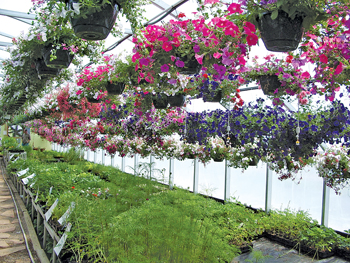Feature Garden: Rosy Outlook
28 Mar 2012
Plant more roses than you think you have space for? Why not? Inspired by Ruth Roberts’ 50-year-old Boulder rose garden, Lynn Nichols’ garden overflows with roses of all varieties. Here’s his advice for aspiring rosarians.
By Mell McDonnell Photos by Lynn Nichols A visitor to Lynn Nichols’ rose garden is usually given three things: a gracious smile from Lynn, a plastic bucket filled with water, and pinking shears—followed by his invitation to wander about and cut whatever blossoms suit one’s fancy.
- Gardener Lynn Nichols did not buy his Gunbarrel property with the intention of establishing one of the county’s most prolific rose gardens. But with passion and time, he developed the skills and know-how to create a glorious retreat.























